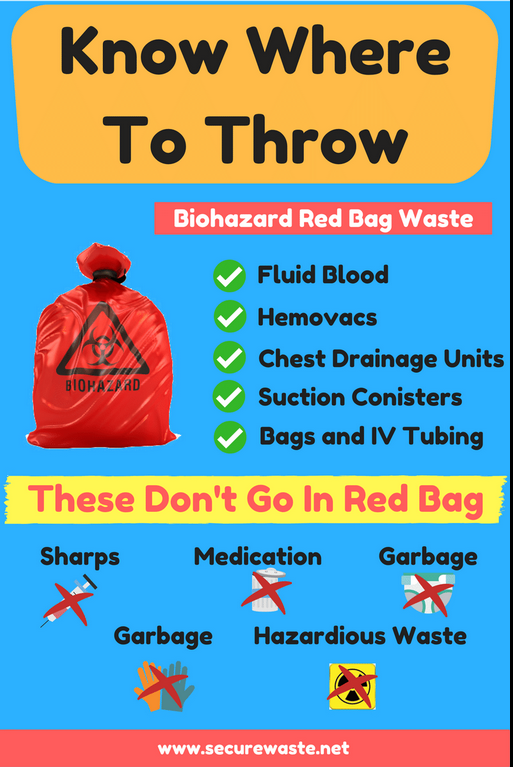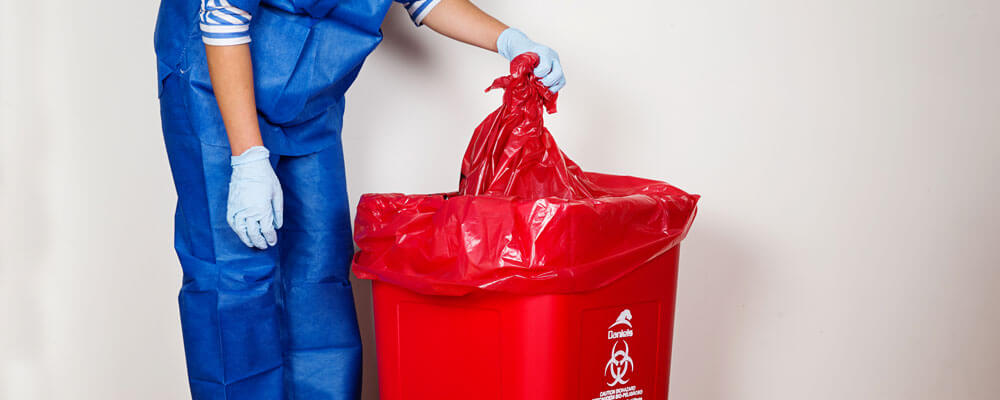Security First: Your Overview to Accountable Medical Waste Removal Services
Security First: Your Overview to Accountable Medical Waste Removal Services
Blog Article
Remain Ahead of Regulations: Specialist Recommendations on Medical Waste Disposal
In a world where the health care sector is constantly developing, it is imperative for clinical centers to remain in advance of regulations when it comes to the proper disposal of clinical waste. From recognizing the various categories of clinical waste to implementing the right collection and partition techniques, this discussion will certainly offer actionable tips and beneficial understandings to aid facilities stay in advance of regulations in the ever-changing landscape of medical waste disposal.
Understanding Clinical Waste Categories
Understanding medical waste classifications is necessary for appropriate disposal and administration in healthcare facilities. Clinical waste refers to any waste generated by medical care tasks that might position a risk to public wellness or the setting. It is critical to categorize medical waste precisely to ensure its secure handling, therapy, transportation, and disposal.
There are a number of categories of medical waste that health care facilities require to be accustomed to. One of the most usual classifications include transmittable waste, pathological waste, sharps waste, pharmaceutical waste, and chemical waste. Each classification has specific standards and policies for its correct management and disposal.
Transmittable waste includes products contaminated with blood or other physical fluids, such as gloves, dress, and laboratory societies. Pathological waste describes human tissues, organs, or body parts that call for special handling and disposal. Sharps waste includes made use of needles, syringes, and other sharp things that can cause injury and transfer infections. Drug waste consists of ended, extra, or contaminated drugs that need mindful handling and disposal. Lastly, chemical waste consists of solvents, anti-bacterials, and other chemical substances utilized in medical care centers.
Remaining Up-To-Date With Regulatory Adjustments
Staying current with regulatory changes is crucial for healthcare facilities to make certain conformity and correct monitoring of clinical garbage disposal. medical waste removal service. With policies regularly progressing, it is crucial for healthcare facilities to stay up-to-date to prevent penalties, fines, and prospective damage to the atmosphere and public health
To remain in advance of regulative modifications, health care facilities should develop a system for tracking and tracking updates. This can be done by signing up for governing e-newsletters, going to workshops and meetings, and actively taking part in market organizations. Furthermore, facilities should mark a personnel or group in charge of remaining notified and sharing details to pertinent stakeholders.
Regular interaction with regulative firms is additionally crucial. Healthcare centers should develop connections with neighborhood, state, and federal agencies to guarantee they recognize any kind of changes in laws that may impact their waste monitoring practices. This can be done with normal meetings, engagement in public comment durations, and proactive interaction with governing agencies.
Moreover, healthcare centers must think about partnering with waste monitoring companies that concentrate on clinical garbage disposal (medical waste disposal services with WasteX). These firms are frequently well-versed in the newest policies and can supply assistance and support to make certain conformity
Applying Correct Collection and Partition Techniques
To successfully take care of clinical waste disposal, healthcare centers need to establish proper collection and partition techniques in accordance with regulatory standards. Carrying out these techniques ensures the secure handling and disposal of potentially hazardous materials, secures the atmosphere, and minimizes the threat of injuries and infections to healthcare employees and the general public.
Proper collection and partition methods entail making use of designated containers and classifying systems. Healthcare centers ought to provide plainly labeled containers for various sorts of clinical waste, such as sharps, transmittable waste, pharmaceutical waste, and non-hazardous waste. medical waste disposal services with WasteX These containers must be color-coded and plainly marked to prevent confusion and promote simple recognition.
Furthermore, medical care facilities need to train their team on the correct treatments for collecting and segregating medical waste. This consists of enlightening them on the different sorts of waste, the suitable containers to make use of, and the significance of adhering to laws and guidelines. Routine training sessions and correspondence course should be performed to ensure that team member stay current on best methods.
In addition, healthcare facilities ought to establish a system for normal collection and disposal of clinical waste. This might entail partnering with licensed waste management firms that specialize in medical waste disposal. These business will make sure that the accumulated waste is delivered and disposed of in conformity with governing requirements.
Selecting the Right Disposal Techniques

Incineration is just one of the most usual and effective methods for taking care of specific sorts of medical waste, such as pathological waste and sharps. It includes the controlled burning of waste at heats, lowering it to ash. Incineration can launch harmful contaminants into the air and contribute to air contamination.

Various other disposal approaches include chemical therapy, microwave treatment, and landfilling. Chemical my website treatment involves the use of chemicals to neutralize the waste and decontaminate. Microwave treatment utilizes microwave energy to heat and disinfect the waste. Landfilling includes burying the waste in a marked land fill location (medical waste disposal services with WasteX). Landfilling ought to be the last resort due to the potential threat of contamination to soil and groundwater.
Making Sure Conformity Via Paperwork and Training
After very carefully taking into consideration the ideal disposal methods for clinical waste, medical care centers should make certain compliance with laws and decrease ecological influence by applying effective documentation and training procedures. This step is crucial in keeping a lasting and risk-free environment for both medical care workers and the public.

Healthcare employees that deal with medical waste must receive proper training on waste segregation, handling, and disposal treatments. By giving detailed training, healthcare centers can equip their staff to make informed choices and minimize the threat of incorrect waste disposal.
Final Thought
In final thought, staying ahead of regulations in medical waste disposal is vital for health care centers. medical waste removal. Understanding the various categories of clinical waste, remaining updated with governing changes, applying correct collection and segregation techniques, choosing the ideal disposal methods, and guaranteeing conformity via documentation and training are all important actions. By following these standards, healthcare companies can effectively dispose and handle of medical waste in a accountable and safe way
From recognizing the different groups of medical waste to executing the appropriate collection and partition techniques, this conversation will certainly provide useful insights and actionable pointers to aid facilities stay ahead of regulations in the ever-changing landscape of medical waste disposal. - medical waste disposal services with WasteX
The most common classifications consist of infectious waste, pathological waste, sharps waste, pharmaceutical waste, and chemical waste. Medical care centers must give plainly labeled containers for different kinds of medical waste, such as sharps, contagious waste, pharmaceutical waste, and non-hazardous waste. Healthcare facilities ought to establish a comprehensive system to tape and track all elements of medical waste disposal, consisting of types of waste generated, amounts, and disposal techniques used. Medical care workers who handle medical waste should obtain appropriate training on waste partition, handling, and disposal procedures.
Report this page